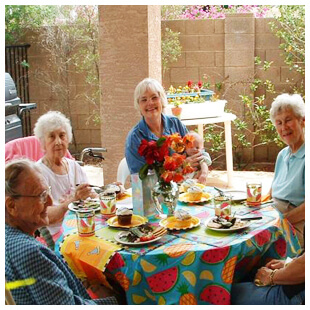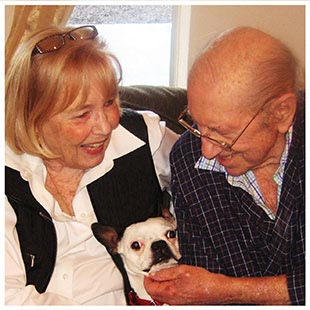
The two main types of long-term care that exist are nursing homes and assisted living facilities (residential care facilities).
If you’re looking for extended care for your aging parent or relative, you’re probably figuring out that you have a range of options. You may already be aware of daily or weekly services such as home care, but you’re now looking into a more permanent form of long-term care.
If you are trying to figure out which type of living setup is best for your elderly loved one, but you’re not sure which is best, read on for further information.
Similarities Between Nursing Homes & Assisted Living Homes
According to the CDC, as of 2014, there were about 30,200 residential care facilities (One million beds) and about 15,600 nursing homes in the USA. Both types of long-term care are specifically set up to help residents with Activities of Daily Living (ADL) which include basic activities like personal care (dressing, toileting), custodial care, day-to-day getting around, and food services. Both also typically offer a range of onsite medical services. (There are also differences between independent living and assisted living)
The Arizona Department of Health provides a brief guide on How to Choose an Assisted Living Facility,
Both of these types of environments are, ideally, safe, supportive environments with specially trained staff that offer varying levels of support on a (mostly) continuous basis. Beyond helping with basic medical and daily care, staff in both types of facilities help with social, enrichment and therapeutic activities.
Costs and Funding Types
Sometimes people have questions related to assisted living vs nursing home costs. People in assisted living residential care typically are paying out of pocket, and expenses are sometimes partially covered by Medicaid. Those who go into nursing homes typically do so because they require more extensive medical care, which is why nursing home costs are more substantial, but also more likely to be covered by Medicaid or Medicare.
Size & Physical Setup
U.S. assisted living communities range in capacity from 4 to 499 licensed beds, where the average facility has 33. Nursing homes may range from 2 to 1,389 certified beds, with an average of 106 beds.
Generally, assisted living setups tend to feel more like a home and less like a hospital. Many are apartment-like, some with private rooms and some with shared rooms. Typically, residents are welcome to bring their own belongings, furniture, and the like in order to feel more comfortable.
Our assisted living group homes are situated in small homes in residential neighborhoods close to parks, shopping, and hospitals.
Assisted living communities tend to offer more freedom and autonomy than nursing homes. At Colten, we have a unique setup that consists of several full houses, each of which has 4-5 bedrooms. This type of intimate, cozy set up allows residents to not only get to know each other but feel more like independent “roommates” than people living in an institutionalized facility.
Assistance Levels
People who live in assisted living homes typically need some help with daily living activities like bathing, dressing, and medication assistance, but do not need extensive, ongoing or highly specialized medical care. Some assisted living facilities (like Colten) offer memory care for adults with less severe levels of cognitive decline.
Assisted care facilities may have nurses on staff–and they are not as likely to be there around the clock as with nursing homes. Assisted living centers do typically have at least some professional staff members available 24-7.
Nursing homes are more suitable for people who require 24-hour specialized medical care for more severe or specific conditions. For instance, they may require the use of specialized therapies or medical equipment.
Final Thoughts
Placing your loved one in long-term care is never an easy decision. However, it’s important to know that there are many options out there so that you might also when to move from assisted living to a nursing home. Be sure to do a thorough evaluation of assisted living facilities in your area in order to find a place where your loved one will receive the type and level of quality care that they deserve.




